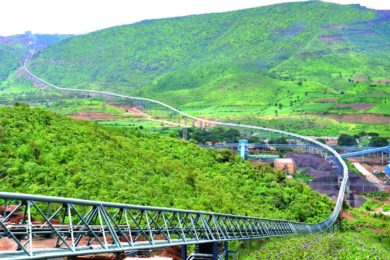Work is well advanced on a drilling programme at Rio Tinto’s Mount Thorley Warkworth coal mine in Australia in a pilot project that aims to reduce the impact of greenhouse gases released during mining. If successful, the A$5.5 million pilot project will provide learnings to support the reduction of Rio Tinto’s carbon footprint at Mount Thorley Warkworth and other sites. Coal seam methane gas is usually released when coal is mined, but the pilot project aims to capture and remove the gas prior to mining.
Full field development of a gas drainage program could follow and, if sufficient gas can be captured, provide an additional energy or income source.
Manager new developments Chris Lauritzen said the methane would be burned during the trial, with the resulting carbon dioxide having significantly less impact as a greenhouse gas than methane. “Using the current calculation methods, over half of our total greenhouse gas emissions are caused by fugative emissions (gases released from seams during mining),” he said. “Methane has 21 times the effect of carbon dioxide as a greenhouse gas, therefore if the gas is burned or captured and utilised to generate energy, then emissions output is dramatically decreased. This has the potential to be a very powerful way of reducing emissions from our operations.”
Energy company AGL and scientists from research centre CRCMining have teamed up with Rio Tinto to trial the new technology. Contractors from McDermott Drilling are drilling four wells in an area which will eventually be mined, while the CRCMining scientists will use one of the wells to trial new radial drilling techniques to drill horizontally up to 200 m from the initial well. AGL is funding the radial drilling component of the trial.
The scientists hope to open up more pathways for the gas to flow, which ultimately would reduce the number of wells required to extract coal seam methane gas. The drilling program is expected to be completed this month, and design of the surface gas and water management facilities is well underway. Operation of the wells and data collection will continue through 2009.








